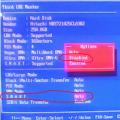If your landline home telephone has stopped working, it is not at all necessary to immediately contact a technician. You may be able to deal with the breakdown on your own.
However, it is worth understanding that not all phone models can be repaired by hand. For example, it is unlikely that without special skills and tools you will be able to restore the operation of the smartphone docking station. With regard to wired telephones, the causes of their breakdowns can be classified as follows.
Telephone debt is one of the reasons for disconnection
So, the most common reason for lack of telephone service, no matter how trivial it may sound, is late payment. Often, the subscriber is disconnected from the telephone network automatically, and notification of this may come late.
Checking the telephone and cable
The next reason, by the way, no less common, is the technical condition of the telephone. So, in particular, it is necessary to check the condition of the telephone cable. It may become unusable if it is worn out at the bend. It can also be harmed by pets. In this case, the cable must be replaced. If for some reason it is impossible to do this, the following procedure should be carried out.
It is necessary to clean the damaged area from the plastic shell, exposing the copper wiring. This must be done extremely carefully, as they are very fragile. After you have freed them from the sheath, you need to twist the opposite ends of the wire together. This way you will restore the integrity of the cable for a certain time. The restored area will also need to be insulated with tape or protective tape.

In addition, the telephone itself may be faulty. It is not advisable to figure out the phone yourself. Since, due to inexperience, you can damage the microcircuit, which will be almost impossible to restore. However, if the buttons of the device simply stick, such a problem can be completely solved by yourself. If the condition of the telephone and cable does not cause any concern, the reason for the lack of communication may be a faulty telephone socket.
In order to find out, you need to disassemble it. By the way, there is no voltage of 220 volts in it. After you have removed the panel from the outlet, you need to make sure that all contacts are connected properly. The dropped contact can be returned to its place using a screwdriver.
Just ten years ago, half of the people did not have a home phone, but today we cannot imagine life without it. Solving work problems after hours or discussing the latest news with a friend - all this can be done using your home phone, and without spending money on mobile communications. However, breakdowns of a landline telephone are a rather unpleasant phenomenon that happens not only to old telephone sets that have served their purpose, but also to new ones. Today we will tell you about the most common home phone breakdowns and how to possibly fix them. Firstly, buying landline phone Be sure to check it for functionality, as they say, “without leaving the cash register.” If you don’t do this, you may stumble upon a defective or already broken device, and changing it is unnecessary fuss and unpleasant conversations with the store staff. Never purchase a phone without a warranty card. Without this document, if the phone breaks down, you will have to pay for repairs with your own money. We do not recommend purchasing a landline telephone at unauthorized sales points: in the market, on trays. In 90% of cases you will be disappointed with the purchase, but it is not worth it. When purchasing a phone, determine for yourself how much you need all sorts of modern features such as automatic dialing, answering or forwarding. If you are not going to use them, we recommend that you do not buy an overly complex device.

There are several most common telephone breakdowns. 1. No beep when connected. First, check that you have correctly connected the phone to the outlet and to the telephone line. In most cases, this is the cause of the “malfunction”. The correct connection on a Russian socket is the upper and lower right contacts, and on European sockets - two central contacts. In this case, the pin should be at the bottom. Do not use a cord that you took from another device. The phone kit should always come with a special cord with a special wiring arrangement. If the line cord is connected to your home phone through a jack, check that the jacks are inserted into the correct jack on the phone. 2. The number cannot be dialed. If there are beeps, then the problem is in the dialing mode. In most cases, tone dialing is used. In some telephone models, dialing occurs automatically using the settings mode. 3. The phone doesn't ring. If the number is dialed and there is a dial tone, then the ringer volume may be turned off. If the device is a three-wire device that works with an automatic device, then check the connection of the third wire to the call line. And if the line is normal, then try connecting the ringing wire to the other of the two wires of the line. 4. There is no dial tone, the microphone does not work, but the phone dials the number and rings. Most likely the problem is with the cord. Check whether the connector is fully inserted into the device socket. If there is no dial tone, then pull the cord near the body and handset. If this doesn't help, just replace the cord.
A telephone is a device designed to operate for a long time. During its service life, almost any telephone device may develop defects. In most cases, you can eliminate them yourself, which will be discussed below.
In devices that have a dialer and a lever switch with mechanical contacts, contamination or deformation of such contacts leads to unsatisfactory operation of the device or even to its complete inoperability. If, when you pick up the handset of the telephone, you cannot hear the answer signal from the telephone exchange, you should first of all pay attention to the contacts of the lever switch. In this case, it is advisable to check the resistance of the electrical contact with an ohmmeter, which should be a fraction of an ohm. Poor contact may be caused by deformation of the lever switch contacts or contamination (oxidation).
Sometimes the dialer rotates slowly and unevenly, causing the number to be dialed incorrectly. This occurs as a result of contamination of the rubbing surfaces of the dialer mechanism, drying out of the lubricant, weakening of the return spring, and improper adjustment of the centrifugal regulator. All rubbing parts should be washed with gasoline or alcohol. Then the rubbing parts, with the exception of the parts of the centrifugal regulator, must be lubricated with an oil-gasoline mixture. The finger disc should be removed and the return spring inspected; if necessary, it is washed with gasoline and tightened by 1...2 turns. Check the speed of the dialer mechanism: the centrifugal regulator must ensure that the disk returns to its original position after dialing the number “0” in 1 s, otherwise the dialer mechanism should be carefully adjusted. The parts of the centrifugal regulator are not subject to lubrication.
Recently, the rubbing parts of dialers are made of Teflon and self-lubricating metalgraphite, and the parts of such dialers do not require additional lubrication. The dialer is the most complex part of a telephone set, and you can disassemble it only if you are sure that assembly can be done at home.
In key dialers, misadjustment and contamination of contacts also occur, which leads to increased contact bounce and incorrect dialing of digits. Remove dust from the contacts with a stream of air, wash them with alcohol, and, if necessary, bend them (if the contacts are mechanical). There are no such problems with reed contacts.
Often the cause of noise in a handset phone is a faulty carbon microphone. If you shake the handset sharply, the interference disappears. This may be the result of partial burnout or lack of charcoal powder. To eliminate the defect, you can try to slightly press the top cover of the microphone inside the capsule body by 2...3 mm. Sometimes, to restore the functionality of a microphone capsule, it is enough to dry it on a radiator for 24 hours. Better yet, replace the faulty carbon microphone with a new one.
The telephone ringer and telephone capsule rarely fail. To check their serviceability, you need to measure the resistance of their windings to direct current with an ohmmeter. For a bell it should be 1.5...2.5 kOhm, for a telephone capsule - 60...70 Ohm. If the bell does not ring, you should check whether ringing voltage is supplied to its windings. If it does not work, you need to check the reliability of the connections, as well as the serviceability of the capacitor. If voltage is applied to the bell winding and the striker remains motionless, check for a gap between the bell cups and the striker.
To set the optimal gap of 0.1...0.2 mm, you need to loosen the screws securing the cups and, by turning the cups around their axis, set the gap to ensure melodic sound. If necessary, you should also adjust the armature stroke, which should be 0.3...0.5 mm. As for the telephone capsule, in some cases its sensitivity can be increased by turning the membrane over to the other side. , Sometimes a telephone malfunction is associated with a broken contact in the printed circuit board: either poor soldering or the formation of microcracks in the printed circuit conductors. The last defect usually occurs when the telephone is dropped, near the most massive parts installed on the printed circuit board (transformer, lever switch, etc.).
Microcracks are usually not visible to the naked eye, and can be detected using an ohmmeter. After detection, strip the printed conductor on both sides of the crack by 5...7 mm
We have all long been accustomed to such an ordinary thing in our home as a home telephone. This type of communication still competes with cell phones. But many people do not know how the work is organized, and when their home telephone breaks down, people rush to call a repairman. But it is enough to know a small amount of information to try to figure it out yourself. To begin with, I’ll tell you the general operating principle of your device.
Let's start with the fact that a communication cable is installed in the house. This cable is then distributed along the entrances with cables of smaller capacity. For example, a cable for one hundred numbers is laid in a house with five entrances, which means that each entrance will receive a cable for twenty telephone numbers.
Such cables terminate in electrical panels, from where telephone lines are distributed to apartments by two-wire wires. This kind of telephone wire (usually pink or white) is laid in your apartment. It is plugged into a telephone socket, and the telephone itself, in turn, is plugged into it.
What to do if it (the phone) suddenly stops showing signs of life?
Don't panic. You shouldn’t immediately run to your neighbor and call a repairman. Most likely, it is within your power to fix the problem, and you will not have to pay for a call from an employee of the organization serving you. (It’s better to visit a neighbor with your home phone and check whether it will work for him, since devices often break down).
Although cell phones have been firmly and permanently integrated into our lives, many people use regular landline telephones. They are always in place and safe for health. Their malfunctions are much less common than cell phones and are mainly associated with a violation of the contact of the twisted wires of the handset, microphone and telephone capsule. There are often cases where the device falls on the floor.
I reached for the handle with the tube in my hand, the device was light, it slid off the table and straight to the floor... bang, or maybe they tried to hang up the phone in a deranged state or wanted to hang on it themselves 🙂 ... history is silent. As usually happens in such cases, the owner tears his shirt and claims that the phone was working, and then suddenly stopped calling. The details of the owner’s life are of little interest to us, and if he does not want to talk about the cause of the breakdown, then this is his personal business.
The malfunction is not complicated, you don’t have to take it for repairs - anyone can fix it!
After a visual inspection of the TX-210M telephone set, the conclusion suggested itself. The device was hanging on the wall and crashed hard.
Everything is clear. The phone holder on the back side has been torn out by the roots.

We open the device. And here everything is clear.

The piezo element of the bell was torn from its place and the wire came off it.

It doesn’t take much intelligence to understand where the break occurred. We heat up the soldering iron and stick the wire where it should be.

We connect our telephone set to the telephone socket. We dial the number of our loved one (or friend) and ask her to call you urgently. We check the call. Everything works great!
We put the piezoelectric element in place, we won’t glue it with Moment glue, we’ll make it more reliable, we’ll put it on hot-melt glue.


Phone case repair
All that remains is to repair the hole in our device. We tear off a plastic panel from another faulty phone or something else, I tore it off from an old TV :)

We drill two holes - one larger, the other smaller. We connect these holes and get this beauty. You can, of course, if you have one, cut a ready-made ear from something.

Using a regular knife, cut off the lacerated wound of the hole.

Now let's fill this huge hole with our beauty.

Something like this, you can use a bolt or a bolt, as you like and want.


And the final touch is to apply hot glue around the perimeter of the plate on the outside, and pour glue inside without sparing it so that it stays firmly in place.

Using this telephone as an example, we saw that you can easily deal with the malfunction yourself. When opening the phone, there may be other similar faults. For example, the leg of a transformer, capacitor or other heavy part may break off. Carefully inspect the inside of the telephone: the conductors and the back of the printed circuit board.
Block diagram of a push-button telephone

Several schemes of push-button telephones







